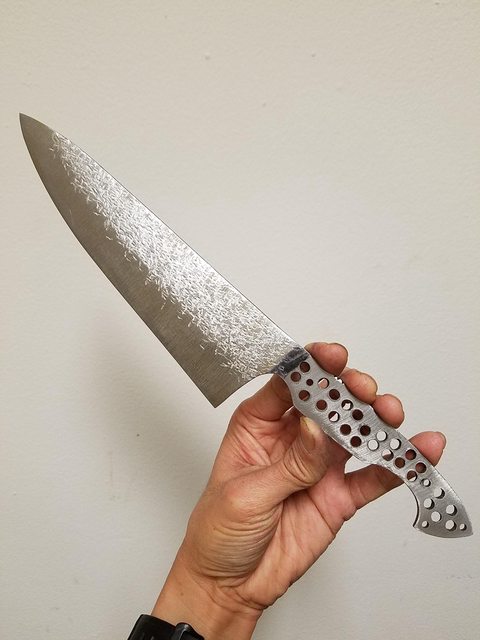I have a question for people who have dabbled into rehandling western handles. One of the major reasons people seem to like wa handles, aside from the shape and look, is that it pushes the weight balance forward compared to western handles.
If you were to rehandle a western handled knife, would it make sense to drill out metal from the tang area to decrease weight in the back half of the knife? This question is in response to seeing a number of other knives using this style of construction such as the knives of Don Nguyen.
If you were to rehandle a western handled knife, would it make sense to drill out metal from the tang area to decrease weight in the back half of the knife? This question is in response to seeing a number of other knives using this style of construction such as the knives of Don Nguyen.





